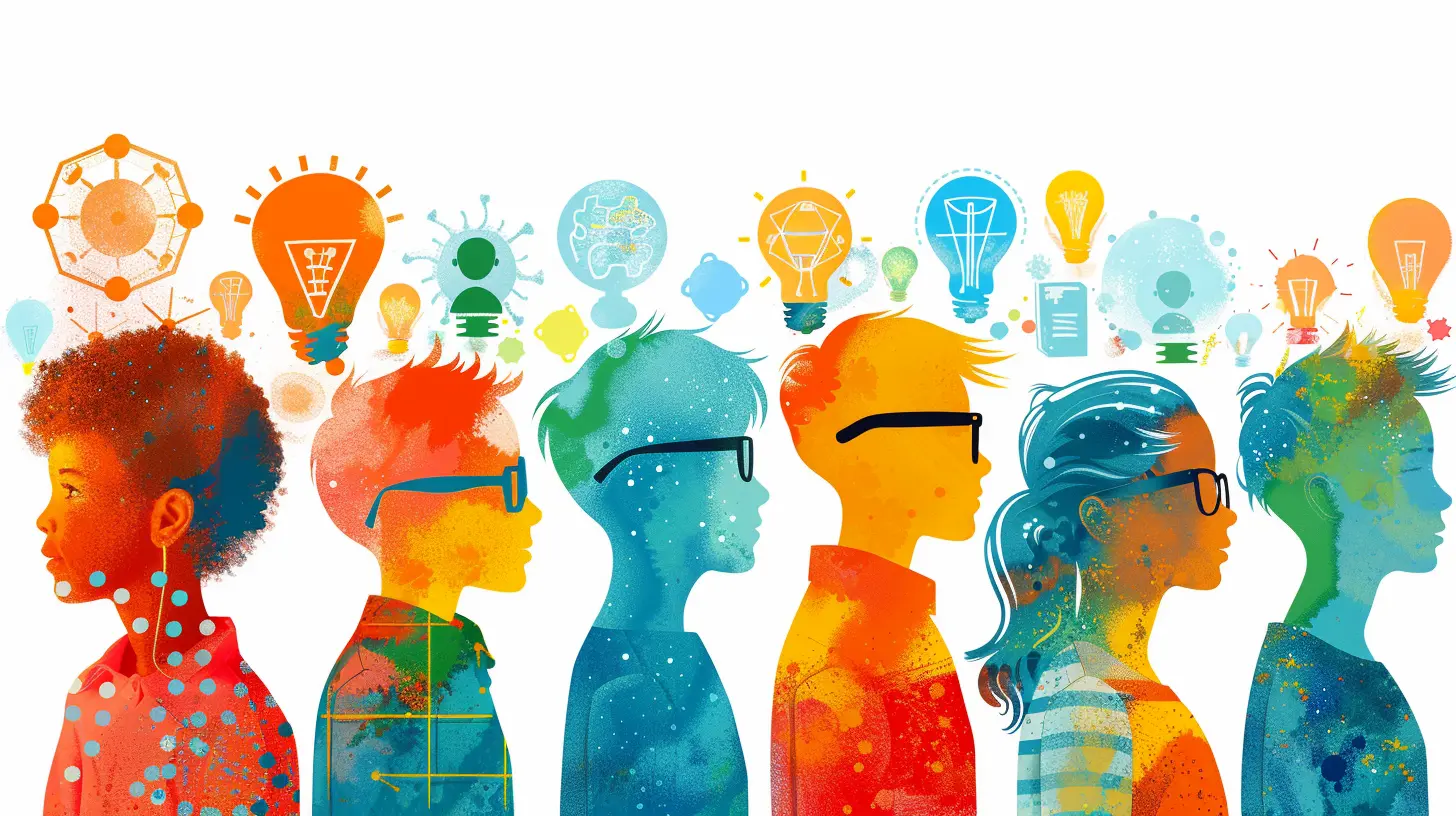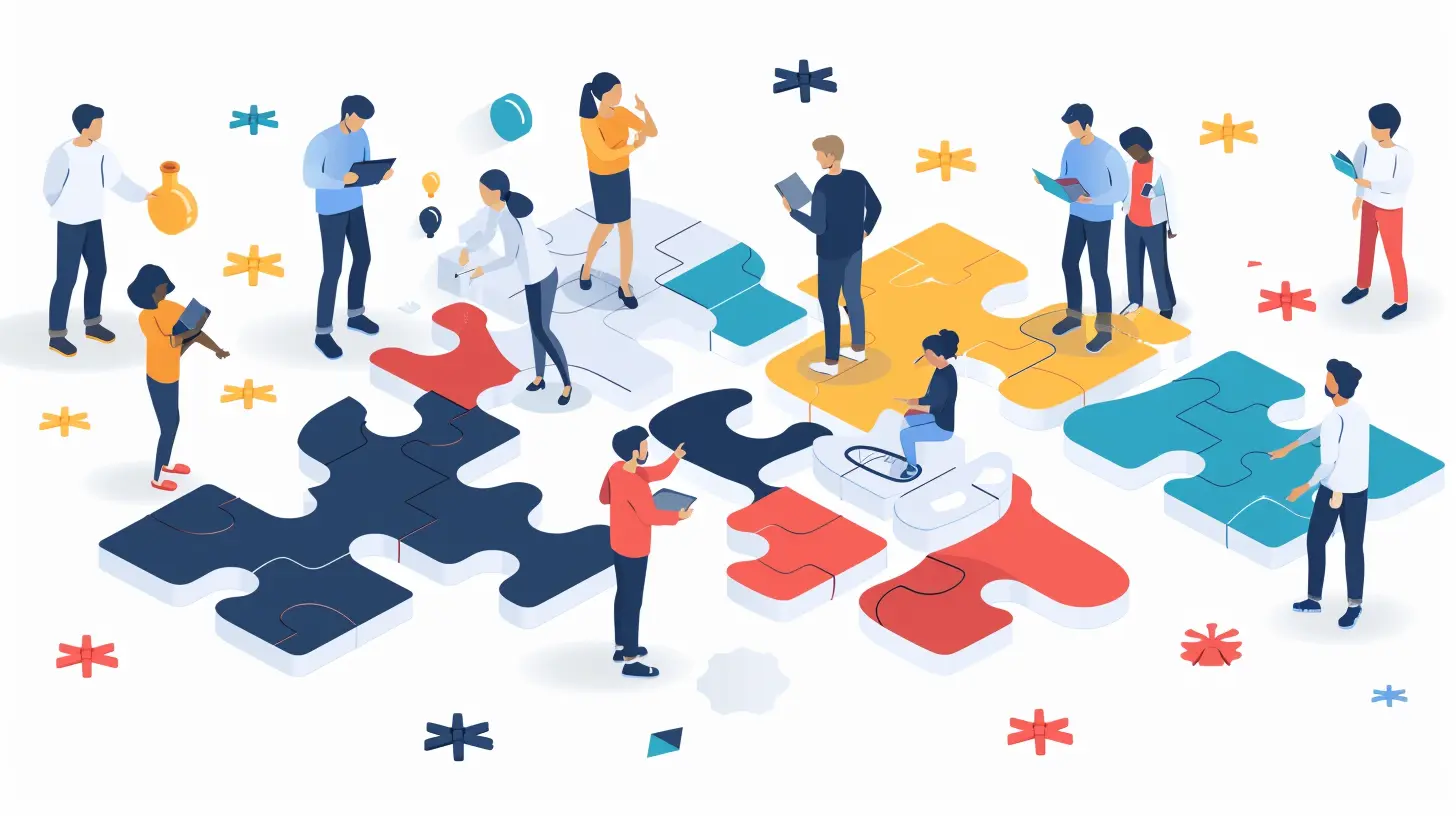STEM for All: Creating Inclusive Learning Environments for Diverse Learners
13 June 2025
We live in a world that's powered by science, technology, engineering, and math—the mighty STEM. It's everywhere: from the smartphones we can't put down, to the bridges we drive across, to the vaccines that save lives. STEM isn’t just the future—it’s the now. But here's the kicker: not everyone gets the same shot at diving into STEM. And that’s a problem.
Ever wonder why some students thrive in STEM fields while others feel like they’re stuck behind a glass wall watching from the outside? It’s not about talent. It’s about access, opportunity, and design. The real question isn’t just how do we teach STEM—it’s how do we make sure it’s for everyone?
Let’s pull back the curtain and unpack this mystery together.
What Does “STEM for All” Really Mean?
STEM for All is more than just a catchy slogan for a classroom poster. It’s a movement. It stands for creating learning experiences in science, technology, engineering, and mathematics that are open, engaging, and supportive—for everyone. And when we say everyone, we mean _everyone_.That includes:
- Students with disabilities
- Girls and young women
- Racial and ethnic minorities
- English language learners
- Socioeconomically disadvantaged students
- LGBTQ+ youth
- Neurodiverse learners
- Rural and urban youth
Because let’s be real: the traditional “one-size-fits-all” model just doesn’t work anymore. If it ever did.
The Problem with Traditional STEM Education
Let’s imagine you're in a STEM class. There’s a bright whiteboard, a teacher scribbling formulas, and students copying notes furiously. But hold on—what if you're visually impaired? Or what if English isn’t your first language? What if you learn best through hands-on experiences instead of lectures?Suddenly, the classroom doesn’t feel so bright anymore. It feels like a maze.
Traditional STEM education often:
🟥 Relies too much on textbooks and rote memorization
🟥 Assumes all students have similar learning styles
🟥 Ignores cultural and gender biases in curriculum
🟥 Lacks real-life, relatable content
🟥 Doesn’t accommodate diverse needs or learning paces
No wonder so many students feel alienated before they even get started.
The Power of Inclusive Learning Environments
Now imagine a different kind of classroom. One that feels more like a lab or studio than a lecture hall. There’s music playing softly, flexible seating, and students using VR headsets to explore the solar system. A student with dyslexia is coding on a tablet with text-to-speech support. Another who speaks Spanish is collaborating on a robotics project with a multilingual interface. You hear laughter. Curiosity. A little chaos, sure—but it’s productive chaos.That’s what inclusion feels like.
An inclusive STEM environment:
✅ Embraces different learning styles
✅ Uses technology to level the playing field
✅ Respects students' cultural backgrounds
✅ Encourages risk-taking and creativity
✅ Values every voice in the room
Inclusion isn’t about lowering expectations—it’s about building better ladders so _everyone_ can reach the stars.
Why Diverse Learners Are Key to STEM Innovation
Still not convinced? Let’s talk innovation.Think about this: the best ideas often come from the edges. From people who look at a problem differently because they’ve experienced the world differently. Diversity in STEM isn’t just fair—it’s revolutionary.
When we include diverse learners, we also include:
🧠 New problem-solving strategies
🌍 Multiple cultural lenses
🧩 Unique ways of thinking (hello, neurodiversity!)
👀 A wider range of needs and insights
In short, diversity drives innovation. Just look at major breakthroughs in tech and science—many of them were born out of collaborations among teams that didn’t all look the same or think the same. Coincidence? Nope.
Barriers That Keep STEM from Being Truly Inclusive
Okay, so what’s stopping us? Why isn’t STEM already inclusive for all?Here are some of the usual suspects:
1. Implicit Bias
Even the most well-meaning educators carry invisible baggage. Sometimes a teacher might (unknowingly) call on boys more than girls during math lessons. Or assume that English language learners won’t “get” computer science. These unconscious biases shape who feels welcome—and who doesn’t.2. Lack of Representation
If you don’t see someone who looks like you in a STEM role, it can be tough to picture yourself there. Representation matters. Big time. When girls see female engineers or Black students see Black scientists in their textbooks and guest lectures, it sends a powerful message: "You belong."3. Accessibility Gaps
STEM labs and classrooms aren’t always designed with accessibility in mind. Not every tool, software, or space works for students with disabilities. We’re talking physical barriers, digital barriers, and even attitudinal ones.4. Rigid Curriculum
Many STEM curriculums are overly technical, linear, and test-focused. They don’t leave enough room for play, creativity, or students who learn differently. Curriculum flexibility? That’s still a rare gem.Strategies for Building Inclusive STEM Classrooms
So, what’s the gameplan? Glad you asked.Here are some battle-tested (and heart-approved) strategies for making STEM more inclusive:
1. Universal Design for Learning (UDL)
This is like the ultimate blueprint for inclusion. UDL encourages educators to design lessons that work for all learners—from the start. Think multiple formats (videos, audio, visuals), flexible seating, and tiered assignments. UDL is less "one road fits all" and more "choose your own adventure."2. Culturally Responsive Teaching
Students bring their entire world into the classroom. Acknowledge it. Use examples and projects that reflect your students’ cultures, languages, and interests. Math problems don’t always have to be about trains and apples—they can be about soccer stats or dance choreography too.3. Differentiated Instruction
Not everyone’s brain ticks the same way. Some students thrive on visuals, others on hands-on activities, and some love a good Socratic debate. Tailoring instruction to these preferences makes a world of difference.4. Tech That Includes (Not Excludes)
EdTech can be a game-changer—but only if used right. Screen readers, speech-to-text tools, coding games, and interactive simulations can make STEM come alive for those who might struggle otherwise.5. Mentorship and Role Models
Find ways to connect students with mentors who can inspire them—especially those from similar backgrounds. Whether it’s a guest speaker, a virtual lab partner, or a STEM pen pal, relationships matter.Real-Life Examples That Prove It's Possible
Let’s ditch the theory for a moment and talk about reality.Example 1: Girls Who Code
An organization helping young girls, especially from marginalized communities, to break into tech. They use relatable projects (like designing apps to help their community) to create lasting impact. Now, many of their alumni are engineers at big-name companies.Example 2: Deaf Kids Code
Students who are deaf or hard of hearing often get left out of computer science. This nonprofit creates workshops and toolkits in American Sign Language to change that. They're opening new doors, one line of code at a time.Example 3: Neurodivergent Coders Initiative
This community helps students with autism and other neurodivergencies explore software development in ways that work with, not against, their brain wiring. Think flexible deadlines, clear instructions, and sensory-friendly environments.What Can YOU Do?
Whether you're a teacher, a parent, a student, or someone who just stumbled upon this article, you have a role to play.Ask yourself:
- Am I encouraging ALL learners to think like scientists and engineers?
- Am I designing lessons, programs, or policies with difference in mind?
- Am I making room at the table—or just adding a folding chair?
Even small shifts—a welcoming word, a different video, a bit of patience—can transform a student’s entire trajectory.
The Mysterious, Magical Future of STEM
Let’s end on a wild thought: What if the next Einstein is sitting in a classroom right now, feeling totally invisible?What if the person who’ll solve climate change, cure a rare disease, or build the next revolutionary app is a kid who doubts they belong in STEM?
The mystery isn’t whether they’re out there—they are. The real mystery is whether we’ll build the kind of learning world that lets them shine.
And that, friend, is up to us.
all images in this post were generated using AI tools
Category:
Stem EducationAuthor:

Monica O`Neal
Discussion
rate this article
2 comments
Noora Baker
Great insights! Emphasizing inclusivity in STEM education not only empowers diverse learners but enriches the field as a whole. Let's continue to champion environments where every learner can thrive and contribute their unique perspectives!
June 23, 2025 at 4:12 AM

Monica O`Neal
Thank you for your thoughtful comment! I completely agree—fostering inclusivity in STEM is essential for empowering all learners and enriching the field. Let’s keep advocating for diverse educational environments!
Kennedy Dodson
This article highlights the importance of inclusive STEM education, emphasizing strategies to engage diverse learners. By fostering supportive environments, we can empower all students to thrive and innovate in STEM fields. Great insights!
June 21, 2025 at 11:08 AM

Monica O`Neal
Thank you for your kind words! I'm glad you found the insights on inclusive STEM education valuable. Empowering diverse learners is indeed crucial for innovation in these fields.


